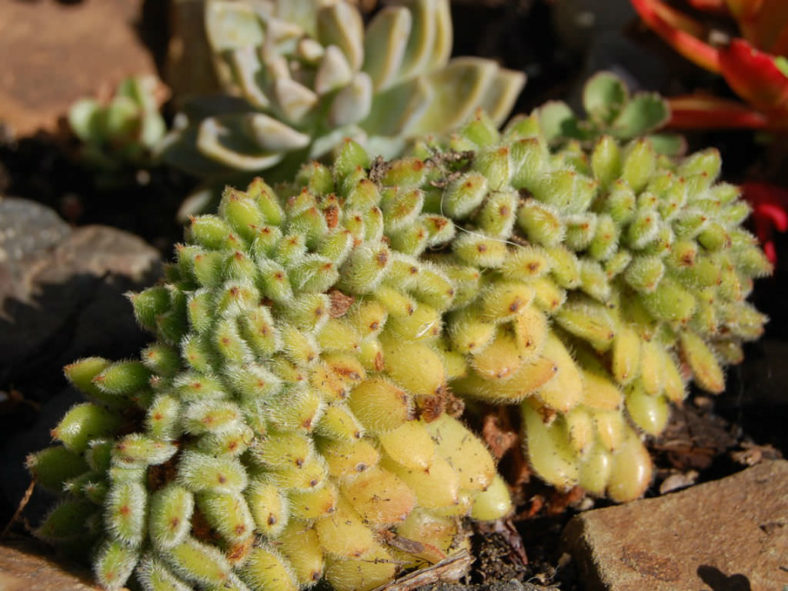Scientific Name
Echeveria 'Doris Taylor Cristata'
Accepted Scientific Name
Echeveria 'Doris Taylor'
Scientific Classification
Family: Crassulaceae
Subfamily: Sempervivoideae
Tribe: Sedeae
Genus: Echeveria
Origin
Echeveria 'Doris Taylor Cristata' is a form of Echeveria 'Doris Taylor' selected for its mutated growth.
Description
Echeveria 'Doris Taylor Cristata' is an intriguing succulent with hairy leaves densely packed along the top of flattened stems. The leaves are pale green and covered with fine white hairs. They are smaller than the normal form of Echeveria 'Doris Taylor'.

Hardiness
USDA hardiness zones 9b to 11b: from 25 °F (−3.9 °C) to 50 °F (+10 °C).
How to Grow and Care
Place the Woolly Rose where it will receive full morning sun or partially shaded afternoon sunlight. If grown in a pot, place it on the balcony or porch during warm, sunny weather. Give the Woolly Rose at least a foot (30 cm) of space on each side to prevent it from being crowded by other plants.
Water whenever the soil feels dry during the growing season. Water lightly until the soil is moist but not very wet. Once established, Woolly Rose can go for a long period without water, but they grow better and faster if they receive regular watering during the growing season. Reduce watering during the winter, allowing the soil to dry thoroughly between waterings.
Fertilize Woolly Rose with liquid 2-7-7 succulent fertilizer during the growing season, from spring to late summer. Add seven drops of the fertilizer to 1 quart of water and sprinkle around the base of the plant. Fertilize once every two weeks.
Woolly Rose will drop many of its lower leaves during the winter. Remove shriveled and fallen leaves as they accumulate around the base of the plant. Discard the leaves before they begin to rot. Decaying leaves can spread the disease to the rest of the plant if not removed.
Learn more at How to Grow and Care for Echeveria.
Links
- Back to genus Echeveria
- Succupedia: Browse succulents by Scientific Name, Common Name, Genus, Family, USDA Hardiness Zone, Origin, or cacti by Genus
Photo Gallery
Click on a photo to see a larger version.


